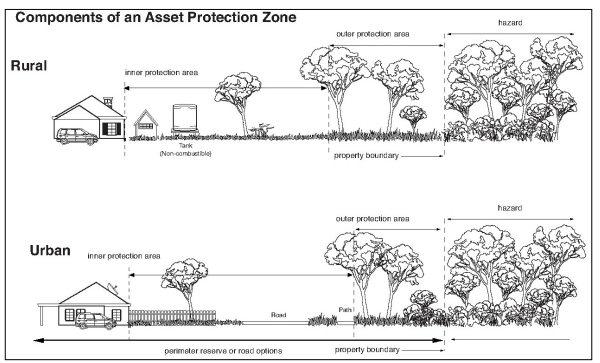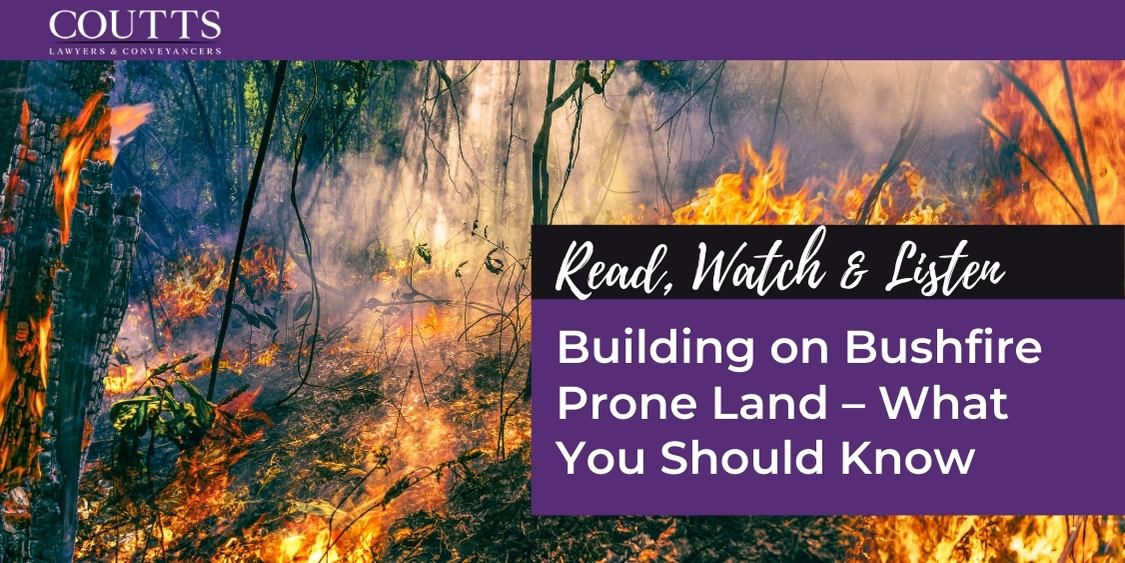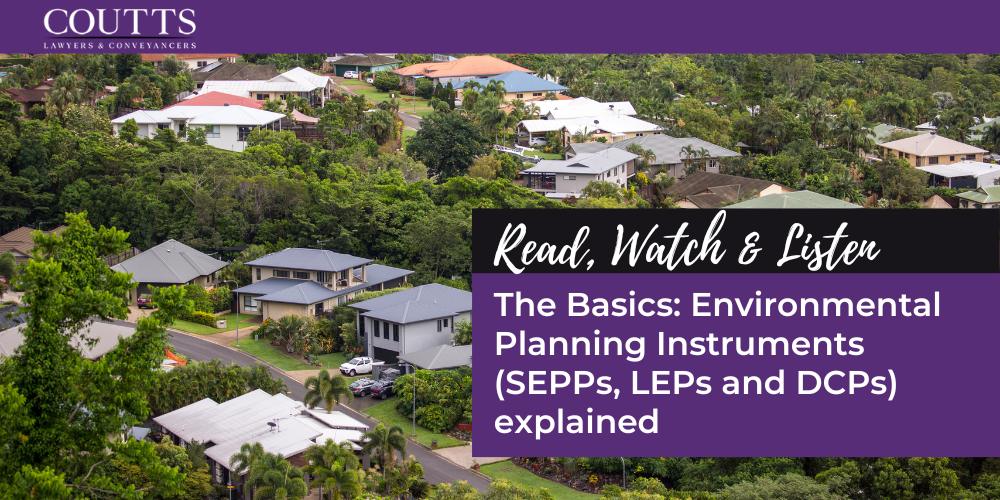KEY TAKE-OUTS
- Planning is key to protecting your home and family in the event of a bush fire
- What can you build on Bush Fire Prone Land and what should you consider before building?
- Understand the terminology around building on bushfire prone land, such as Bushfire Attack Level (BAL) and Asset Protection Zones
- What do you need to know before lodging a Development Application or Complying Development application?.
What does it mean if I have purchased bush fire prone land (BFPL)?
The land or property you have purchased has been identified by Council as being land that can support a bush fire or is likely to be subject to bush fire attack. Council prepares maps identifying bush fire prone land for their local government area. These maps also identify the vegetation classifications and associated buffer zones.
Can I build on bush fire prone land?
When building on or renovating a residential dwelling on land that has been identified as bush fire prone, the requirements set out in the Planning for Bush Fire Protection document must be met. These requirements include protective measures to increase the safety of people and make buildings less vulnerable to damage or destruction from bush fires.
If the dwelling being proposed does not comply with requirements and standards set out in the Planning for Bush Fire Protection and Standards for Asset Protection Zones, the Council needs to refer the application to the NSW Rural Fire Service for advice.
It is not the intention of the measures to prevent the development of land in bushfire-prone areas. However, in order to provide adequate protection from bush fires, it may be necessary to modify the style, construction material or sighting of a building.
What is a Bush Fire Attack Level (BAL) and what is the purpose of the BAL?
A Bush Fire Attack Level (BAL) is used to describe the level of a potential bush fire attack on a property. Bush fire attack is in reference to the potential flame contact, ember attack or radiant heat exposure that may affect a building and damage or destroy it during a bush fire. The different levels for BAL are:
Bush Fire Attack Level
| BAL | Description of risk |
| BAL – LOW | Lowest risk from a potential fire. |
| BAL – 12.5 | Risk is primarily from potential embers during a fire. |
| BAL – 19 | Moderate risk, particularly from embers and burning debris. |
| BAL – 29 | High risk, particularly from embers, debris and heat. |
| BAL – 40 | Very high risk. Likely to be impacted by embers, debris, heat and potentially flames. |
| BAL – FZ | Extreme risk. Directly exposed to the flames of a potential fire front. |
Source: NSW Rural Fire Service
A BAL assessment will need to be undertaken for your property to demonstrate compliance with Planning for Bush Fire Protection and satisfy the council.
When considering the construction of your dwelling, it is important to build in accordance with the correct BAL Construction Requirements. These measures are in place to help a building to potentially survive a bush fire and to provide better protection for human life.
What is an Asset Protection Zone (APZ)?
An APZ is a buffer zone between a bush fire hazard and buildings. It is expected that the APZ is managed to minimise fuel loads and reduce potential radiant heat levels, flame, localised smoke and ember attack.
The APZ distance is determined in reference to vegetation type, slope and the nature of the development. The APZ can include roads or properties managed to be consistent with APZ standards set out in Appendix 4 and the NSW RFS document Standards for Asset Protection Zones.
The key element of an APZ is a fuel-reduced, physical separation between buildings and bush fire hazards. An APZ has a major influence on the type of construction necessary to mitigate bush fire attacks to ensure radiant heat levels at the buildings are below critical limits and prevent direct flame contact.
An APZ is divided into two areas known as the Inner Protection Area and Outer Protection Area, as shown in the image below:

Inner Protection Area (IPA)
The IPA is the area closest to the building and creates a fuel-managed area that can minimise the impact of direct flame contact and radiant heat on the development and act as a defendable space.
In a practical sense, the IPA will typically consist of the yard around the building, consisting of a mown lawn and well-maintained gardens.
Outer Protection Area (OPA)
An OPA is located between the IPA and the unmanaged vegetation. It is an area where there is maintenance of the understorey and some separation in the canopy.
The purpose of reducing fuel load in the OPA is to decrease the intensity of an approaching fire and restrict the potential for fire spread from crowns of the tree canopy. Based on how an OPA needs to manage, they are applicable to forest vegetation.
An APZ should be maintained in perpetuity to ensure ongoing protection from the impact of bush fires. Maintenance of the IPA and OPA should be undertaken regularly, particularly in advance of the bush fire season.
Council may require as a condition of your development consent that an asset protection zone is maintained in perpetuity. Sometimes, this requires reaching an agreement with adjoining neighbours due to the vegetation located on an adjoining property forming part of the asset protection zone for your property.
How do I manage an Asset Protection Zone?
In designing your home and landscaping, you can blend in with the natural environment in order to minimise the impact of fire at the same time. To provide an effective APZ, you need to plan the layout of your garden to include features such as fire-resistant plants, radiant heat barriers and windbreaks.
For further details, refer to the Standards for Asset Protection Zone available from the NSW Rural Fire Service.
What is the difference between a Bush Fire Risk Assessment Certificate and a BAL Risk Assessment Certificate?
The Bush Fire Risk Assessment Certificate is used to support the development application process. The Bush Fire Risk Assessment Certificate is prepared and issued by a recognised bush fire consultant. The purpose of the Certificate is to certify that a proposed development conforms to the specifications and requirements of the NSW RFS document Planning for Bush Fire Protection.
A BAL Risk Assessment Certificate is required when submitting your development application as a complying development in accordance with the State Environmental Planning Policy (Exempt and Complying Development Codes) 2008 (the SEPP Codes). A BAL Risk Assessment Certificate is to certify that your proposed development does not exceed BAL-40 or BAL-FZ as required under the SEPP Codes.
Pathway to Approval
Prior to submitting your application, it is wise to make enquiries with your insurance company, bank/lender and council. They will provide details on any processes they require prior to lodging applications.
There are two options when seeking approval of your development, which are to lodge a Development Application with Council, or through a Private Certifier as a Complying Development, which are as follows:
It is important to note that while each step in the process is the same, there are differences in the requirements to satisfy each step. Review the details available through the NSW Rural Fire Service to gain further guidance.
Summary
When considering properties to build on, consider the general amenity of the surrounding area and whether the land may be mapped as bush fire prone. If you are unsure, seek out the relevant council bush fire maps and make enquiries with builders, NSW Rural Fire Service and council to understand what additional requirements may need to be met when lodging development applications and planning for construction. Planning is key is protecting your home and your family in the event of a bushfire.
Coutts can assist with identifying whether your land is bushfire-prone, and if so, preparing relevant agreements between neighbouring properties to ensure asset protection zones are maintained in perpetuity.
For further information please don’t hesitate to contact our Sydney lawyers:
info@couttslegal.com.au
1300 268 887
Contact Coutts Lawyers today.
This blog is merely general and non-specific information on the subject matter and is not and should not be considered or relied on as legal advice. Coutts is not responsible for any cost, expense, loss or liability whatsoever in relation to this blog, including all or any reliance on this blog or use or application of this blog by you.



